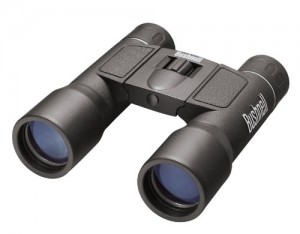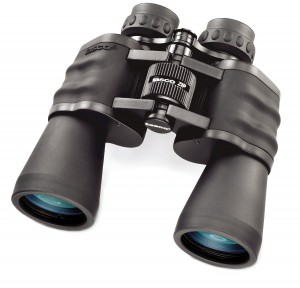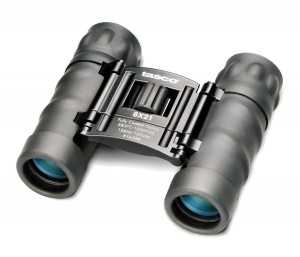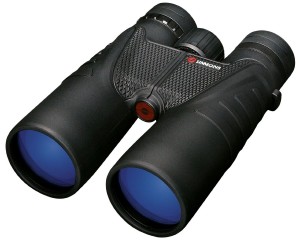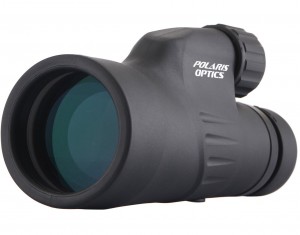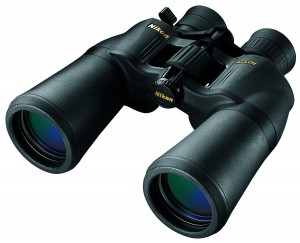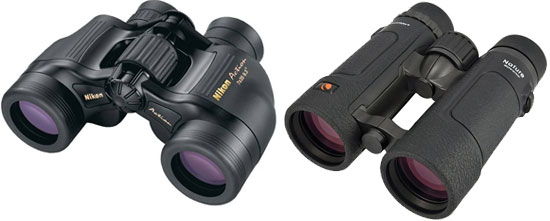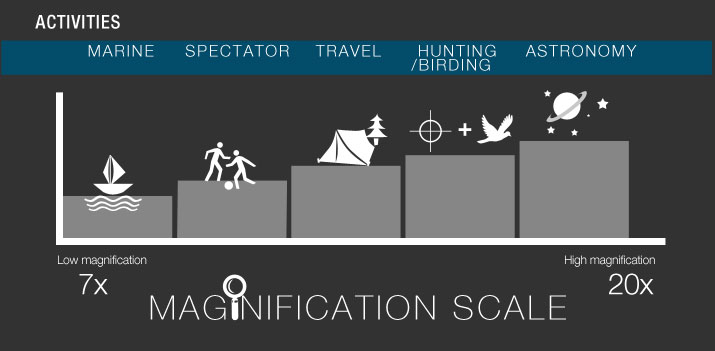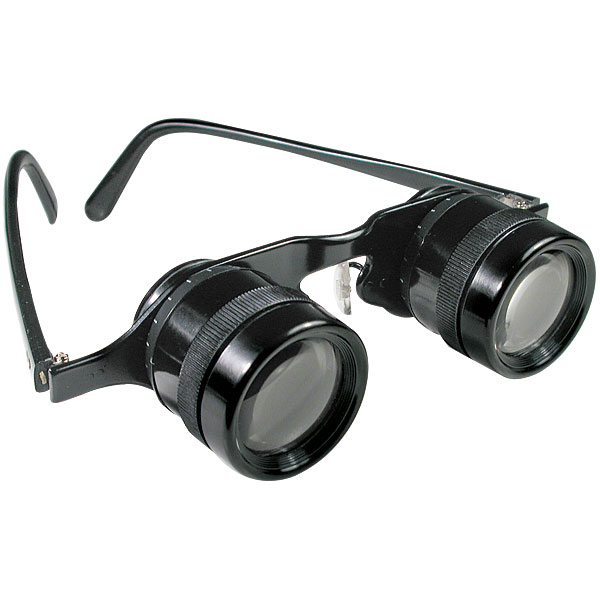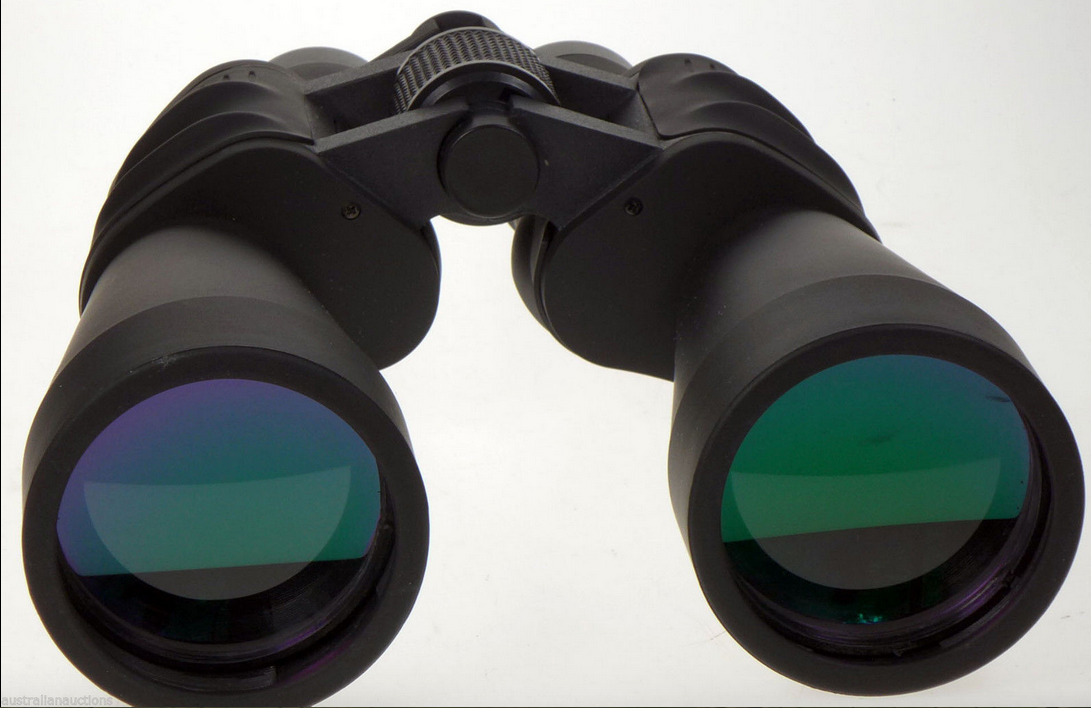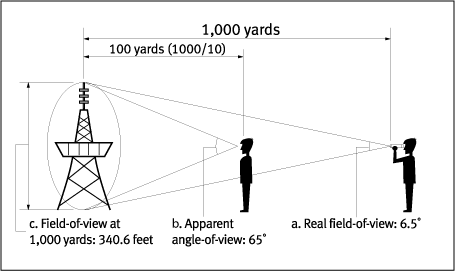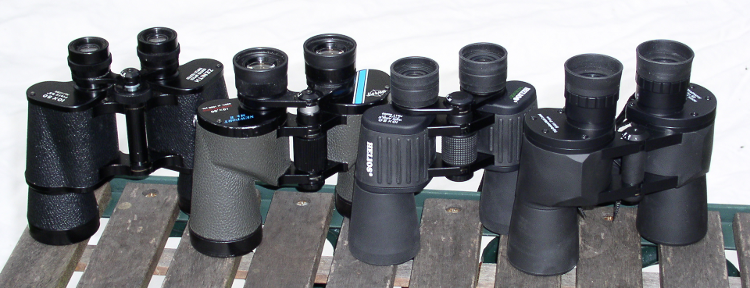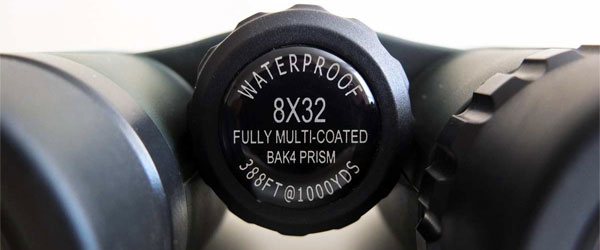Whether you are into stadium sports, hunting, hiking or any other outdoor activity, you need an efficient and reliable binoculars to capture every moment as it is even when you are yards away from the target.
For an outdoorsman, high-quality binoculars are of huge importance. Therefore, choosing one gadget from the currently crowded market needs proper preparations and critical decision making, in order to get the best service. Remember, your performance and experience will deeply depend on the type of binoculars you will be using.
This is to mean that, you cannot just wake up in the morning and hit the stores for a new set of binoculars. Instead, one ought to carry out a thorough product research and determine all the factors to consider when selecting a new piece. Once you have realized everything you want in your gadget, you can easily pick the Best Hunting Binoculars.
To make your work even easier, we have reviewed the top 10 best hunting binoculars, with almost everything you can desire for in your hunt, hike and any other outdoor activity. You can, therefore, opt to shop from our list to increase your chances of investing in the right device.
Editor Choice Top 10 Best Hunting binoculars
Bushnell Powerview Compact Folding Roof Prism Binocular Review
This Powerview Compact is a versatile binocular that can be used to magnify almost everything you want to explore. If you love adventure, you will find this piece of portable equipment very useful. The carrying case and a neck strap provide comfort and convenience while you are on the go.
With its contemporary design and viewing range of 378 feet, you will enjoy discovering new things using this powerful device. The foldable binoculars magnify up to eight times the size of the original object and it is compact to fit in a purse or pocket.
Using this stylish gadget provides you with a consistently reliable performance from its center focus, roof prism and an eye relief of 10 mm.
Celestron SkyMaster Giant 15x70 Binoculars with Tripod Adapter
It is hard to find a binocular with a cheap price and provides you with great magnification. CalestronSkyMaster is an incredible device with 15x magnification that enables you to enjoy a great visual experience. The 13mm long eye relief makes this device perfect for people who wear eyeglasses.
The Bak-4 internal prisms and multi-coated optics provide you with better and brighter images. This is a lightweight device that comes with a soft carrying case making it easy to carry around. The lightweight gadget has an adopter that makes it easy to fit to a standard tripod fitting.
If you are looking for a great binocular for bird watching, recreational use and stargazing and have a limited budget, this piece of equipment will be a great purchase.
10x50 Wide Angle Binoculars
Are you an avid birdwatcher who has no problem in going to the forests or swamps, getting yourself dirty, and waiting for hours together to catch a glimpse of avian life? Do you love hunting and are longing to get close to your subject without actually being all that close to them? Are you looking for a pair of binoculars which will not only offer top-notch, high-quality features but at the same time not burn a hole in your pocket? Search no more, these 10×50 Wide Angle Binoculars are here to the rescue.
10×50 Wide Angle Lens
This simply indicates that you can magnify your subject ten times through the 55mm diameter wide-angle lens, thereby offering powerful magnification. It is one of the most intriguing features of this product. The wide angle lens provides a beautiful panoramic view and does live up to the expectations. The 55mm diameter large lens offers exceptional light-capturing capability making this product ideal for low-light or nighttime hunting, hiking, Twilight bird watching and many other outdoor activities.
Tasco Essentials Binocular
The Tasco is a high performance set of binoculars with a compact roof-prism design. It features coated optics that provides you with a clear view. The weather resistant design enables you to go anywhere you want to view or focus and you can choose from different models in compact and full size.
The neck strap and the carrying pouch make it comfortable and convenient to carry the device while you are on the go. The 8x magnification and 21mm objective lens makes the black piece of equipment is ideal for hunting. The ultra-light binocular is as well ideal for hiking, bike touring or backpacking.
It features a rubber-armored housing for shock absorption and ensures the device is well protected from bumps and harsh weather.
PermaFocus Wide Angle Porro Prism Binocular
If you love adventure, you will find the PermaFocus Wide Angle binoculars a must have gadget. Its porro prism system provides you with a wide field of view when focusing on different things and objects. You can observe objects twelve times closer, thanks to its 12x magnification lens.
Using this gadget enables you to get brighter and clear images. This is made possible by presence of 50mm diameter high performance objective lens. It features a fold down eyecups for eye glass wearers.
This is a great device for bird and whale watching among other interesting activities. With the included case and shoulder straps, it is easy to carry the binoculars when travelling to different places.
12X50 High Powered Monocular View
This is the most powerful hand held monocular that you can find in the market today. Its 12x magnification enables you to get clear and brighter images. This High Powered Monocular features a durable external armor and tripod for protection and hands-free steady viewing.
This is a device that can be used in any weather condition or environment, it is waterproof and fog-proof. The barrels are filled with nitrogen gas that prevents internal fogging. It is designed in such a way that dust, debris and moisture are prevented from getting inside the monocular.
Being the brightest and clearest monocular that is available in the market today makes it a great selection for watching wildlife, scenery and bird watching among other activities.
10x25 Waterproof Binocular
This is a great piece of equipment from Barska. The lightweight binoculars are compact with Bak-7 prisms for great imaging. They are waterproof and fog-proof making them ideal for use in any weather condition. They feature a yellow and black exterior and a protective rubber armor that protects it against shock.
You are able to enjoy 10x magnification and a wide field of view with the 25mm objective lens. The stylish, compact and lightweight binoculars are easy to carry around, you can take them anywhere. It comes with a limited lifetime warranty from the manufacturer.
This is a great device for an active lifestyle; you can use it for different outdoor activities for dependable and reliable results.
Canon Binocular Review
Canon 12×36 Image Stabilization II Binoculars w/Case, Neck Strap & Batteries
As an experienced birder/ bird watcher, I like spending on binoculars. Although, I have about 50 different varieties of binoculars, I still long for more. I just love spending on new binoculars. If my Amazon account is ever reviewed, the reviewer will find binoculars in nine out of ten purchases I’ve made. Well, as I understand every binocular lover wants to own the latest and sophisticated pair of binoculars. While browsing through Amazon, I found another great pair of binoculars which has some latest technologically advanced features and is quite sophisticated too.
Nikon Aculon A211 Binoculars Review
We are always in search of binoculars which are fully loaded with features as well as economical. Very few binoculars are actually built as per user’s needs and out of them only a few have a reasonable price tag attached to them. The 8245 ACULON A211 8×42 binoculars are one such example. The bifocals are loaded with some exciting features and are quite reasonable. The lorgnette can be used for multiple purposes like birdwatching, hunting, outdoor activities like trekking, jungle safaris etc. The 8245 ACULON A211 8×42 binoculars are high performance binoculars made to satisfy the users. The field glasses are handy and with a black colored housing look stunning. It has features which cannot be neglected, namely,
Powerful Optics
The 8245 ACULON A211 8×42 binoculars have a zooming capacity or magnification power of 8x which means that a user can view objects 8 times closer than it actually appears to the naked eye. The binoculars have a wide angle objective lens of a 42 mm diameter which are multi-coated for better light transmission and superior brightness. The coating provides better viewing to users. The pince-nez are equipped with anti reflective glasses which provide a good quality precise viewing.
Simmons ProSport Binoculars Review
I’ve been an avid birdie for almost 10 years and have learnt a lot. I’ve learnt to have patience and calmness of body and mind. Bird-watching is a form of Yoga, it brings us closer to nature and makes us a calm person. Because of my bird-watching hobby I came across binoculars. Initially, I didn’t know a thing about them, their specifications and importance of their features. But now I completely understand the importance of a good bifocal. While searching for a new pair of binoculars I stumbled upon ProSport Roof- Prism Waterproof/ Fog- proof Binoculars which had some excellent features for its users. They were:
High-Quality Optics
The ProSport Roof- Prism Waterproof/ Fog- proof Binoculars come in two variants, viz. 10×42 mm and 12×50 mm. The numbers here mean that the binoculars have a magnification or zooming capacity of 10x and 12x along with an objective lens of 42 mm and 50 mm diameters respectively. The magnification depicts that the binocular can see the object 10 and 12 times closer than it actually appears to the naked eye. This power of magnification is sufficient for observing birds, stadium sports, etc.
Roof Prism Binoculars Review
Roof Prism Binoculars Review | 10×42 mm Roof Prism Waterproof Binoculars
The internet market is flooded with binoculars, but there are only a few binoculars that serve a user’s purpose completely. A good bifocal is one who comes is not just loaded with features but is also handy. It should have features, which are of use to a user. For example, a binocular that is waterproof is a useful feature but a feature of some prism might not be a useful feature altogether. While I was browsing the net, I came across a superb pair of binoculars, which was waterproof as well as had some quite useful features. The optical instrument was also reasonable at the same time.
This is also referred to as the power of the binoculars, which refers to how large the device can enlarge the target for a better view. For instance, binoculars with up to 10x magnification provides more clear images as compared to ones with lower magnifications. With higher magnification binoculars, you will always see the target as it really is.
Field of view refers to the area in degrees that is practically seen through your hunting binoculars; the higher the field of view, the better the binoculars. Therefore, when looking for a new set of hunting binoculars, you need to consider how large it covers your area of target.
.
Again, large front lens allows more light into the binoculars and focuses the brightness to the eyes, allowing the user to see clearer images. Meaning, it is as well important to consider the diameter of the front lens when buying your new pair of binoculars. 50mm is large enough to offer great clarity of the image.
.
Another important factor to consider when purchasing new binoculars is the diopter adjustability. This allows the correction of differences in the view from different eyepieces. It allows user to adjust the right eyepiece to match the left view for more clarity and vivid image.
This is what determines the exact size or diameter of light transmitted to the eye. Meaning, it will determine how you view your target as well as the level of brightness and clarity. When hunting, a large exit pupil is a great advantage, since it improves your accuracy and view.
Hunting and any other outdoor activity might be interrupted by rain, fog or any other adverse weather situation that interferes with your view. Therefore, you need to choose a weatherproof construction when purchasing hunting binoculars. Fog-proof and rainproof modes of operation are great additions to hunting binoculars.
Housing and general design of the binoculars also matters a lot. The appearance, weight and compactness are major considerations when looking for such devices. Lightweight and compact binoculars will make your work easier, while attractive design spices up your hinting experience. Perfect grips as well as ergonomic designs are also great additions to your pick.
Binocular Buying Guide
What is the purpose of binoculars?
Binoculars are utilized to observe objects that are far away. Binoculars, in the simple definition, are magnification instruments that are comprised of two telescopes mounted on a metal or plastic casing so that a viewer can view pictures as though they were much closer.
Moreover, Binocular telescopes or binoculars are instruments used to see objects at far separations. They are two same symmetrical telescopes put one next to the other, lined, in the same way, permitting us to utilize both eyes. Most are smaller than usual in size to be put in our grips, and others are not, the ones that are utilized as a part of research facilities.
We use binoculars for General Purpose, Bird Watching, Hunting, Astronomy, Marine and so on.
Who invented binocular?
Binoculars were invented by Jan Lippershey in 1608. In any case, it appears that Galileo may have pretended the first thought for binoculars, including what lenses to use in them.
The directly held binoculars were developed by Johann Zahn; utilizing 2 tubes a flexible connection.This Dutch researcher was accepted to make the first telescope, which was vital for Galileo to develop binoculars.
Consider what you would be doing well now without your PC. Presently, consider existence without your cell phone. What about how you are going to get past your daily hygiene.
The Best Binocular Deals
Most importantly, we understand that the greater part of people considering about buying a binocular need some help in determining which model will be best for their needs.There are a confusing number of decisions available, with an extensive variety of sizes and costs. We comprehend purchasing a binocular can surprise to those that don’t have sufficient energy to do a lot of research on the subject. We have attempted to answer probably the most widely recognized inquiries; we get in regards to our binoculars on this page.
Regardless, if you are not prepared to make a buy, we guarantee to give you our master counsel and proposal, with as much or as little technical feature and clarification as you like and without a sales arena. We trust that the more you find out about binoculars, the more you’ll understand our binoculars offer the best general value available.
Binocular Buying Guide:
Binoculars use a chain of lenses, components, and prisms magnify a view to creating a magnified view of far off people, places, or things. Utilizing two parallel optical tubes permits you to see with both eyes open, which is more pleasant and natural when contrasted with utilizing a spotting scope or telescope—which involves you having one eye shut. Also, having both eyes open keeps up your depth of field and gives you a rich and fascinating experience where the scene captures on a more exact, 3-D appearance
If you have been looking for binoculars, you will have seen that a few looks extremely streamlined while others look thicker and heavier. That is because the physical appearance and size of a binocular is dictated by the kind of prism it exercises. There are two sorts of prisms: Roof and Porro. Prisms are utilized to improve the introduction of the view on a level plane and vertically, so the picture looks normal; without a prism, binoculars would make things look upside down and in reverse. The glass components in a roof prism are from each other, making roof prism binoculars more streamlined and simpler to hold. Porro prisms have the glass components balance each other, and can give more noteworthy profundity of the field and a more extensive field of view contrasted with comparative roof prism models. This is proficient by folding the light way, which cut down the length, spreading the targets more remote detached.
It can be a huge range in value between apparently similar pairs of binoculars. The major reasons for a huge cost range are the class of the optics, the natures of coatings applied to the lenses, as well as other features that might be attached, such as the substance that comprises the housing. Also, the prism category can be a cause in determining the price. As of the physics engaged in designing and developing the compact roof prism form factor, you can include a pair of the Roof and Porro binoculars so as to seem identical as far as excellence and performance, other than the roof prism adaptation will often be more costly. There is a good news that, if the form subject is not an issue, many public find that they can improve the quality of their binocular by selecting a Porro-prism with no re- assess their budget.
Theoretically, the nature of prism utilizes in binoculars is a double-Porro prism, but is always reduced to just Porro. It is always capitalized as well, as it is the last name of the originator. This most fundamental of prism configurations is characterized by the folded light pathway that relocates the point where the light comes into and exits the prism, which outcomes in the familiar and everywhere look, of a “traditional” or “old-school” binocular.
“Roof Prism” was earlier connected to the Abbe-Koenig (AK) prism design that adjusted a picture evenly and vertically while keeping up a straight line from the point the light enters the prism and ways out it. While the AK prism configuration is the most widely recognized, there are others that are deviations from the first AK design, for example, the Amici and Schmidt-Pechan (SP). While they accomplish the same fundamental function, the optical ways take diverse routes to rectify the picture orientation. The principle point of interest of the SP design is that it is more minimized than both the Amici and AK prisms.
The takeaway: Because Porro prism binoculars are normally more financially effective to deliver versus rooftop prisms, you will frequently have the capacity to get a higher-quality and bigger target Porro model for about the same cost as a comparable roof prism one.
Binocular Terms: What you need to know?
Magnification and Objective:
All binoculars contain numbers, for example, 10×42 and 7×20, which pass on to their magnification and target lens diameter. Utilizing 10×42 as a sample, the 10x means that the binoculars have 10x magnification power, creating the view through them show up 10 times closer than they do with the naked eye. For most circumstances, clients ought to search for binoculars from 7x to 10x power. The drama goes out to pick something in the scope of 3-5x, depending upon your seats, game fans will be satisfied with a 7x model while big-game seekers would require 10x or higher for longer-run observations. Remember that for some clients, binoculars more noteworthy than 10×42 may introduce trouble holding them steady or for extended periods, so a tripod ought to be considered if you are searching at models with higher magnifications or larger destinations.
The “42” in our 10×42 binocular submits to the measurement of the goal (front) lens in millimeters. Since the targets will regularly be the biggest bit of the optic, it will influence the general size and weight of the binocular, furthermore the amount of light it can accumulate. In essential terms: bigger targets permit all the more light to go through them versus smaller lenses, which means pictures will look like brighter and clearer. On the other hand, the bigger destinations will likewise include considerable mass and weight, and that is the place certain tradeoffs and compromises should be considered when choosing if certain models will be advantageous to carry, pack, hold, and utilize.
Zoom binoculars offer variable magnification and are appearing as 10-30×60. In this illustration, 10 x magnifications are at the low end and 30 x magnifications at the top of the line. On most of the models, there will be a thumb lever or wheel set, helpfully within reach at the same time as holding the binocular so you can regulate the magnification without changing your grip or taking your eyes from the eyepieces. When zooming offer more noteworthy adaptability, there may be an observable degradation in picture brightness and sharpness some place along the zoom range, from the optical way and physics of the prisms, will have been improved by a single power and as you move away from that magnification, the picture quality might suffer.
Exit Pupil:
The exit pupil is a measure of the focused light that strikes the eye. To observe the exit pupil, grip the binocular eight to ten inches far from your face and notice the little spots of light at the focal point of the eyepieces. Exit pupil diameter, which ought to dependably be bigger than the pupil of your eye, is specifically influenced by the target width and the magnification. The pupil of a human eye ranges from around 1.5mm in bright conditions to around 8mm in the dark. If your binoculars’ exit pupil distance across is smaller than the pupil of your eye, it’s going to appear as though you are looking through a peephole. Remember that as eyes age, they have a tendency to enlarge less, so exit pupil becomes more vital as the client age.
Binoculars’ exit pupil diameter is determined by separating the target by the magnification: so a 10×42 binocular has a 4.2mm exit pupil diameter. That is a liberal size, and bigger than the pupil of the eye more often than not. In any case, a 10×25 sets of binoculars have a way out exit pupil of only 2.5mm, which is less than the normal pupil widening and will be harder to see through clearly.
Zooming binoculars may have an acceptable exit pupil diameter under low magnification, however, one that is to some degree less under high magnification. For instance, a 10-30×60 binocular has 10x magnification at the low end and 30x magnification at the top of the line. At 10x, the exit pupil width/diameter is a reputable 6mm, yet at 30x it’s just 2mm.
Eye Relief:
Eye relief is the ideal separation from the eyepiece to your eye or the point of convergence where the light goes through the visual lens. Makers introduce eyecups on the eyepieces to put the client’s eyes at the correct separation from the eyepieces to make utilizing them simple. If you put on glasses, the lenses will locate the eyepieces past the eye help separation, influencing the picture quality and your capacity to accomplish sharp core interest. Numerous binoculars offer dioptric adjustments on one of the eyepieces so that most clients can finely tune the centering framework for their eye solutions so they can utilize the binocular without their glasses. If your solution is troublesome, or you’re imparting them to different clients, the eyecups are frequently adjustable. Essential eye cups fold back to permit you to put your eyeglass lenses closer to the visual lens. Another sort is movable eyecups that bend in and out to set the correct separation of the individual client.
You will by and large, find that models with longer eye relief have a smaller field of view than comparably valued models with shorter eye relief. Achieving superlative statistics in both classes is a costly procedure of optical engineering. It is constantly great to have an expansive survey region, so choose the amount of eye relief is vital for you and purchase the binoculars that give the broadest field of perspective. Field of view talked about in more noteworthy point of interest below.
Glass, Prisms, and Coatings:
Glass:
The sort and nature of the glass utilized for the lenses and prisms matter. The genetic optical glass may have defects, and if they are not grounded and cleaned accurately, they could bend light strangely, making hues look off or anticipate fine centering, or you may see mutilation at the edges. Specific glass, for example, low scattering or additional low scattering, is designed to have practically no twisting and transmit light better without bending it. The subsequent pictures are by and large clearer, sharper, with genuine nature version and higher complexity.
You might likewise see some with “Eco-glass.” This general term submits to naturally cordial glass that doesn’t utilize lead or arsenic while it’s being made. While this might influence the picture quality, if your lenses break or you have to discard your binoculars, you can feel sure that you’re not adding to chemical contamination.
BAK4, BK7, and SK15 Prisms:
The dialog in the opening paragraphs managed the two primary sorts of prism configurations, yet past that, the materials that the prisms are having about the incredible effect picture quality. BAK4, or Barium Crown glass, is viewed as the best kind of material. It has a high refractive file and lower basic edge than different materials, which implies it, transmits light better with less sideline -light being lost because of inner reflection, for example, from internal bubble caught during the assembling procedure. The bk7 glass is seemingly the most utilized material for binoculars. While it might be thought to be of lower quality than BAK4, it is still optical glass, which implies it has immense light-transmission properties and a set number of inside imperfections.
The simplest approach to telling if your binocular utilizes BAK4 or BK7 is to turn it around, hold it 6 to 8″ far from you and look down the goal and watch the exit pupil. On the off chance that you can see a squared-off side to the general roundness of the picture, the binoculars have BK7 prisms. BAK4 prisms display a more genuine round way out pupil, which means the better light transmission and edge-to-edge sharpness.
The sk15 glass is an uncommon material that strikes a center ground between the past two. It has a higher refractive list than both, yet has a scattering (measured on the Abbe scale) that falls in the middle of BAK4 and BK7. Pictures that are seen through SK15 prisms are extremely clear, with high complexity.
Coatings:
Lens coatings are sheer films connected to lens surfaces to lessen glare and reflections, expand light transmission and complexity, and make the colors look clearer. Any light reflected is a light that never achieves the viewer’s eyes, so by taking out reflections, the picture winds up being brighter. Coatings, when all is said done, are great, given that the coatings accomplish something. It’s a simple to put cheap coatings on a lens to give it a cool-looking orange tint, yet the coating won’t do anything to enhance picture quality. If you are not ready to test a set of binoculars before purchasing, all the better you can do is study the brand, search for client audits/user reviews and make inquiries before you purchase.
Terms, for example, coated, multi-coated and completely multi-coated refer to the area and covering procedures utilized. Coated lenses are the most fundamental and mean that no less than one lens surface has no less than one layer of covering on it. Multi-coated implies that various surfaces are coated, and different layers of coatings have been connected to every surface. Completely multi-coated implies that all surfaces—inward and external—of the lenses have various layers connected to them. This treatment offers the maximum level of light transmission, clarity, differentiation, and shading interpretation. At the pinnacle is broadband, completely multi-coated. These coatings are designed to be compelling over a wide range of wavelengths and give the best performance.
Supplementing lens coatings are prism coatings. These make bigger light reflection and enhance picture shine and complexity. While numerous makers may utilize standard intelligent coatings, the more elite class of prism coatings is called dielectric coatings, which permit right around 100% of the light through the prism, bringing about brighter high-differentiation pictures. Another is covering “stage revises” the light. At the point when the light goes through the prisms, the diverse wavelengths move at distinctive velocities through the prisms, affecting the color and complexity. Phase-corrected prisms accurate this and guarantee the light comes through at a uniform pace, which significantly affects the colors and difference of the picture.
Angle of View and Field of View:
The words “point of view” and “field of view” are integral. Both terms illustrate the amount of view, measured on a level plane, that is obvious when looking through a specific binocular. The point of view (AoV) is communicated in degrees. Visualize remaining amidst a titan pizza pie; binoculars with a 6.3-degree edge of view would display the viewer a 6.3-degree “cut” of the 360-degree pie, searching outward.
Another approach to express the review edge is the Apparent Angle of View (AAoV). It is figured by taking the AoV and multiplying it by the magnification. So if that 10×42 binocular from the prior sample, has a 6.3-degree AoV, it’s clear angle of view is 63-degrees. The AAoV is the point of the magnified field when you look through binoculars; so bigger the clear field of view is, the more extensive the field of view you can see even at high magnifications. As a rule, an AAoV of more than 60-65-degrees are measured as Wide-Angle.
If, while looking through binoculars, you see a degree particular without a mark, simply recollect that if it’s a low number like 6.3 or 7.8, this will be the real point of view since it’s alluding to the edge of the goal lens. If it’s a substantial number like 55 or 68, it is alluding to the obvious point of view.
Field of view is expressed in feet at a taking apart of 1,000 yards or meters at 1,000 meters and is the width of the visible territory that can be seen without moving the binoculars. As a rule, the higher the magnification and smaller the target, the shorter the field of view.
With a small information, you can, as a rule, create senses of everybody of these approaches to say the amount you can make sure whether you make out a little math:
Field of view of a binocular is expressed in feet at a distance of 1,000 yards or meters at 1,000 meters and is the width of the viewing area that can be seen with no moving the binoculars. Generally speaking, the higher the magnification and smaller the objective, the shorter the field of view.
The primary thing to know is that 1-degree = 52.5 feet at 1000 yards. From that point, you can begin measuring.
So if you got an 8×42 binocular and that the FoV is 360′, you can compute that, the AoV is 6.9-degrees (360 ÷ 52.5) as well as that the AAoV is 55.2-degrees (6.9 x 8). By flipping these fundamental Formula Just to demonstrate the relationship in the middle of the magnification with FoV, if that binocular above was a 10x rather and the FoV was the same, the point of view would stay 6.9-degrees. However, the clear edge would be pumped up to 69-degrees.
Minimum Focus Distance:
It may appear like an odd thing to consider, following the entire thought of a binocular to take a gander at things from far off; and for most clients that are totally genuine. On the other hand, there are a reasonable number of devotees who utilize their binocular for bird watching or insect surveillance. Numerous flying creature (bird) watchers like to have a genuinely close least distance of focus that can permit them to see the moment point of interest of —wing bars or beak shape, crown markings—while the bird is nourishing. A close focus of under 6′ for a full measure binocular is imperative. Ordinarily, as magnification is enlarged, the minimum focus separation likewise increments. For users searching for a short, close-center remoteness, emphasize target size and keep the magnification at around 8x.
Housing Styles:
It is the nature of a catchall category to talk about some design features that address to the form and purpose of the optic, rather than the presentation,.as you can guess any of the other values.
Open or blocked bridge refers to the center portion that attaches the two optical tubes on roof prism binoculars. In general, the center axis and focusing method will be enclosed in the housing. Whereas this strengthens the axis and mechanism, the blocked bridge puts off your hands from covering all the way around. An unwrap bridge will have the focus mechanism near to the eyepieces and an extra stabilizing section near the objectives, with the center section left open. It not only permits a full wraparound grip, other than it also cuts the, on the whole, the weight of the optic.
Focusing:
The enormous majority of binoculars makes use of a center focus system. The chief focus wheel is put between the two oculars as well as moving them coordinately. Amid center focusing, many producers will have a dioptric regulation dial on individual of the eyepieces to fine-tune the focal point to match individual optical recommendations. The dioptric modification amount is decided by each producer, generally by model, and can be on the left or right eye, or both. Definite models have the dioptric modification integrated into the center focusing system.
There are two additional focusing types that require to be addressed: individually along with focus-free. The individual focus models do away with the center-focusing method to provide each eyepiece the capability to focus independently. Even as this allows for exceptionally fine and exact focusing, they are regularly frustrating to make use of when sharing and must simply be considered if there will merely be one primary user. A lot of marine and astronomical models characterize this system. A pair of Focus-free binoculars do not include any focusing systems. They depend on to your eyes to focus the picture, allowing you to focus on the scenery and get pleasure from the views.
Weather-Resistant, Waterproof, Fogproof:
A lot of binoculars do not have weather proofing, at the same time as some are waterproof as well as others are waterproof and fog proof. The ranking will determine under what circumstances the optic be supposed to or can be utilized.
No rating: Binoculars that have no weatherproofing ought not to be utilized in the rain or at the ocean, as moisture can get inside them. At the point when water gets into the optical tubes, it can cause fogging, which hampers with your outlook, and unavoidably prompts internal rust and erosion.
Weather resistant: Frequently, but not generally, the optic will utilize some seal—an O-ring or gasket—to keep moisture, for example, from a light fog, from getting into the optical tubes. With a safe climate binocular, you can take it out in wet conditions without creating damage.
Often, but not all time, the optic will employ some seal—an O-ring or gasket—to hold moisture, such as from a small mist, from getting into the optical tubes. With a weather-resistant binocular, you can take it out in moist conditions without causing damage.
This Waterproof: A pair of binoculars is preserved with O-rings to put off moisture from getting into the interior; nevertheless they can still mist up on you. Depending on the production along with the seals, some waterproof binoculars are moreover submersible to definite depths for different amounts of time. Exact manufacturers charge their binoculars for inadequate depths for limited amounts of the moment; others will remain to military standard qualifications and rate them for a large amount of greater depth.
Fog proof: Fogging happens when the air within the optical tubes includes moisture. When you go from a hot cabin to the frigid conditions outer surface, the moisture can reduce on the in the interior of the lenses, causing them to fog. A set of Fog-proof binoculars is packed with static gasses such as nitrogen or argon, or an amalgamation of the two, to check fogging. The immobile gas is dried up and is pumped into the optical tubes under pressure, preserving the gaskets as well as O-rings tightly in place.
A reliable question I find asked is, “What is the dissimilarity between Nitrogen and Argon?” A fast Google search will come back a lot of links to forums where numerous people are asking the similar question. The little answer is that there, in fact, is not much of a difference. If you look into the query and look at a diagram of each particle/molecules, you will observe that argon molecules are bigger than nitrogen. The hypothesis behind using argon is that the bigger molecules will have a harder moment leaking out from the seals, maintaining the inert gas within a long and thus maintaining their water/fog-proof properties over a longer sum of time. As of a realistic standpoint, as long as you have an optic with either of these inert dry grasses, you are in front of the game, versus having none.
Keep in mind: All waterproof binoculars are not fog proof, other than all fog-proof binoculars are waterproof.
Specialty of Binoculars
Rangefinders:
A set of Rangefinder Binoculars has an incorporated laser that is used to calculate the distance from the binocular to a thing. They can be used in the ocean to measure the distance to another sea boat or possibly somebody who needs rescuing, or by hunters to measure the distance to their prey. They can help golfers calculate their move to and fro from the sand trap to the next hole. Rangefinder binoculars characteristically display the detachment to the target in either meter to feet, with the state able to be seen in the eyepieces.
Technical innovations have made the rangefinders more specific, and some have the capacity to do a single mark measurement, or a continually updated measurement so you can go behind a moving subject and get the almost real-time distance. The newest versions include an incline-meter that evaluates the uphill or downhill angle from you to the subject. An interior computer running proprietary software and using exceptional algorithms geared for golf or hunting can take the remoteness and angle, and calculate an accustomed distance for you to evaluate your shot. In the future, you can anticipate seeing GPS tracking or position logging being extra integrated into these sorts of binoculars.
Image-Stabilization:
In the similar way that digital cameras can have picture stabilization, so too, can binoculars. Image stabilization compensates for operator movement, the credibility of a boat, or the vibration of an aircraft, which normally avoid the viewer from getting a steady image. A pair of Stabilized binoculars usually holds a gyro that needs the power to supply stabilization or a pendulum-type tool that provides stabilization exclusive of being power-driven. Most frequently, this kind of binocular is utilized by the boat driver to decrease the disorientation common with high-power optics, or although using them in choppy seas. They are also well-liked by aviators and search-and-rescue professionals.
Marine/Outdoor:
This type of binoculars has features and roles that are made particularly for certain jobs or environments. Marine binoculars will frequently have poly carbonate housings that are oxidization and hotness resistant for use in saltwater situations, and often will be buoyant, so if they obtain dropped overboard, they can be simply retrieved; others still will aspect bright colors to create them easier to spot.
Some binoculars can contain integrated digital and analog compasses. They will frequently have the direction shown in the field of view for easier use and bearing reading. Digital compasses are battery powered and light up for use in most lighting conditions. Analog models can apply batteries or might have an unclear window at the peak of the housing to channel and focus surrounding light for illuminating the compass. Lots of marine, image-stabilized, and rangefinder models suggest versions with or with no compasses.
Accessories:
Essential accessories serve to put back lost or broken stock things or can merely make carrying or with your binocular a bit easier. These simple upgrades can consist of the following items.
Tethered caps: These have a ring that circles over the objective end of the housing so when you require taking the caps off you just flip them down, and you do not have to be anxious about losing them.
Rain Guards: Put back your stock eyepiece caps with a one-piece rain guard that prevents the eyecups from flooding. It will frequently attach to the neck strap to maintain it safe and usable for flash showers.
Straps:
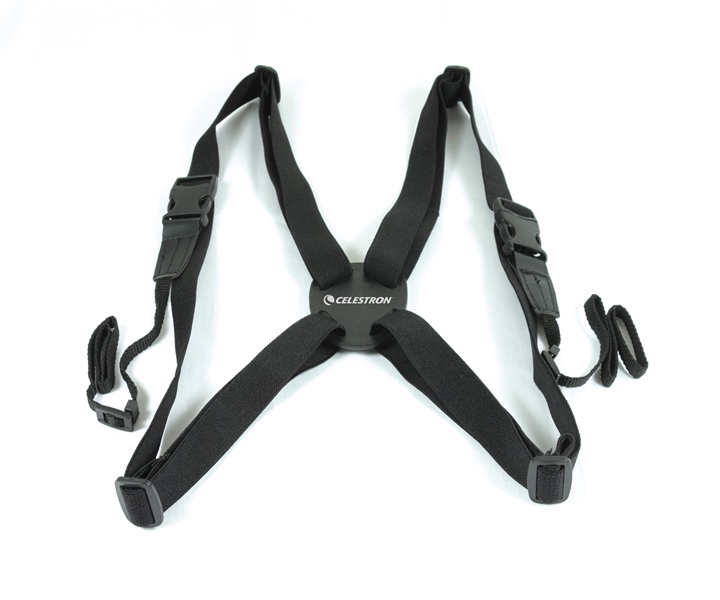
Not pleased with the slight nylon strap that came with your binocular? Get a new one that’s longer, adjustable, padded, ergonomic, buoyant, colored, or equipped with your favorite Camo pattern.
Cleaning kits/supplies: Solutions, pens, clothes, cleaners, kits—the whole thing and anything you require to clean and keep up your optic properly.
Tripod Adapters: As talked about before, binoculars with magnifications of 10x and higher are hard to hold steady, particularly if they have large objectives—typically 50mm and bigger. Big binoculars occasionally have a built-in tripod mount that makes it easy to mount them on a tripod. Sometimes a tripod adapter is essential. Normally, full-sized binoculars have a plug that unbolts from the face of the center hinge. The adapter screws into its place and mounts on most quick-release plates or tripods. Several tripod mounts are just a small platform on which to lay the binocular and grip it in place with a regulating strap.
Harnesses: For the majority of us, the neck strap that comes with good number binoculars is fine. For that person who require extra, there are many options for you. Some are designed to reallocate the weight of the binocular from the neck to the back and shoulders. Others present a stabilizing task allowing you to grip the optic in your hand while practically eliminating hand shake or other arrangements. For persons who do actions and want to stay their optic at the ready, some harnesses hold the binocular close up to the body and significantly reduces swinging or swaying at the time of running, climbing, or skiing.
Eyecups: As we talk about earlier, the eyecups grip the eye at the appropriate distance from the ocular lens. Various manufacturers offer eyecup upgrades for certain models. The most popular are replacing customary flat eyecups with winged eyecups. The wing wraps around one’s eye socket and obstructs your peripheral vision, which eliminates light leakage for improved picture brightness and a clearer view.
The dig is scoping: The employ of Digiscoping adapters has seen an increase in the past years since just about each phone in everyone’s pocket is outfitted with a camera. These adapters, frequently binocular and phone-specific, permit you to mount your phone on one of the eyepieces and capture photos of the magnified view. Depending on the producer, these adapters can be completed of plastic or metal with varying degrees of usability options. The excellent news is that as the hobby develops, further and more options are made available so that you can waste as much or as tiny you want.
At this moment that you know what to gaze forward, we have focused in on some perfect models for a selection of hobbies and purposes. Furthermore, we have included existing pricing information to help conduct your purchase.
Focusing Your Binoculars:
Make certain the binoculars are the perfect width of your eyes, and then get anything to focus on, such as a tree branch against the sky or a wire over the head. Focusing on both your both eyes open by turning the central focus wheel to nice tune your focus, close your right eye and, using only your left eye,
Take care of one’s Binoculars:
Clean one’s binoculars regularly and be careful not to damage the lenses in the process. Wiping them with your shirt sleeve might put a lot of small scratches over the glass or lens coatings.
An excellent way to clean your optics is to begin with a soft brush or compressed air as well as blow away any dust or dirt. Dampen a lens cloth or lens tissue with an especial cleaning solution for lenses then Simply wipe the lenses. Dry them with a part of the dry cloth. Look for smudges and repeat as needed.
Final Words
Outdoor sports or adventure requires a long sight, longer than the normal sight we human beings posses. That is why we have binoculars and rangefinders to add up to where we can t reach with our ordinary sight. For hunters, marine sportsmen, bird watchers and hikers, high quality hunting binoculars is all they need.
The problem is, finding the best hunting binoculars might not be as easy as it sounds. More so when you are new in the market, you might get lost between different brands and complicated technical descriptions.
Therefore, you need to avoid the confusion and visit the stores with a specific product in mind to make your purchase more appropriate. That is why we have narrowed the list to only ten hunting binoculars, with the best features in the whole market. This buying guide ensures that you invest in worthy binoculars with the ability to offer satisfactory services for the right budget.
 FNFTravel.com Your Travel Guide
FNFTravel.com Your Travel Guide

